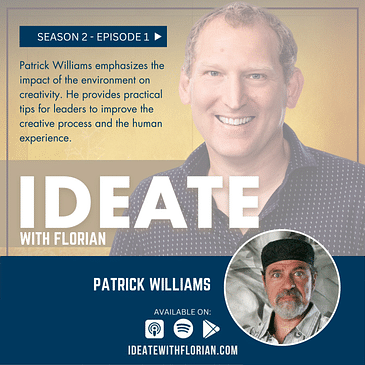BIO
Patrick Williams is a passionate and inspiring artist, consultant, public speaker, writer, independent scholar, and visionary educator. Patrick has over 4 decades of experience teaching and facilitating deep learning to a wide range of audiences. He is a TEDx speaker and an award winning artist. Patrick has exhibited throughout the USA, Japan, and China. His art is in public and private collections. He has been represented by galleries in Chicago, Seattle, Omaha, and Albuquerque. Patrick holds black belts in Karate-Dō and Aikidō with decades of experience training and teaching Budō. Patrick’s comprehension, experience, expertise, and synthesis of creativity and innovation is unparalleled. Patrick is the founder and president of Satori Innovation: A Consulting and Ideation Accelerator.
SHOW NOTES
In this episode of the "Ideate with Florian" podcast, we have the pleasure of hosting Patrick Williams from Omaha. Patrick shares his TEDx speaker experience, recounting the day of his talk, and the lessons learned from that day. Dive into the discussion as Patrick emphasizes the impact of your environment on creativity, reflecting on his childhood in Omaha and the phenomenon of creative colognization. Discover the profound connection between passion and purpose, as Patrick provides practical tips for team leaders and emphasizes the importance of journaling in the creative process. Join us for an engaging conversation on creativity, entrepreneurship, and the human experience.
Share:
Subscribe:






